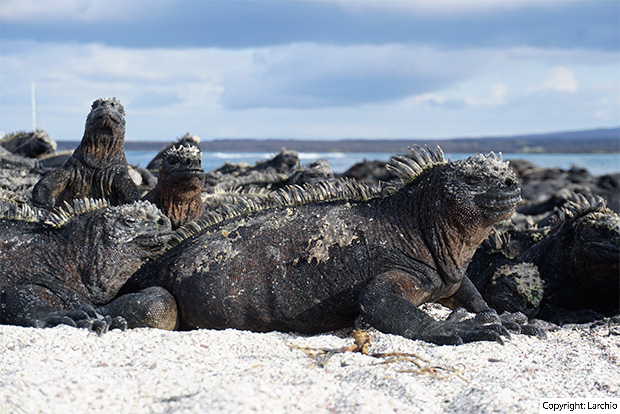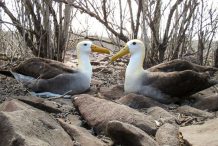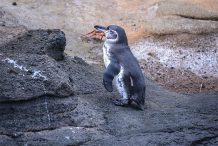How do You Get to Galapagos Islands
We are the best Galapagos Tours tour operator. Take a trip with galapagosinformation.com!. How do You Get to Galapagos Islands.
Travel to Galapagos Islands Ecuador can be an undeniable tropical paradise, among the most extraordinary animals in the world is found on the Galapagos Islands. A journey to the Galapagos is definitely the trip of their lifetime for the majority of site visitors. The wildlife in Galapagos that you’re going to encounter can’t be found somewhere else, but in this place sea and land animals and wild birds are friendlier.
You could find Boobies, giant tortoises, iguanas and many others, will probably be found in close proximity in your excursions. If you love surfing or snorkeling, sea lions will be playing with you and underneath them, turtles and may be encounter.
When is the best time to travel to the Galapagos?
The Galapagos Islands, positioned in the Pacific Ocean, around a thousand kilometers (600 miles) west of Ecuador, have a very unusual weather conditions, warm and semi-arid, with a very hot and relatively stormy season coming from January to May, along with a dry and cool weather, but also cloudy and misty, through July to November.
The areas of the Galapagos are barren, with the exception of the larger islands, that get far more abundant rain. As was observed by Charles Darwin, who as we know studied the details of the species located in the islands, their climate is colder than one would likely assume from a location based close to the Equator, as a result of Humboldt Current, which often reaches the location right after circulating in the water west of Latin America. Regardless, here the climate is varied from one year to the other, because there are completely different ocean currents that encounter or alternate in the area (there is also a hot current coming from Central America, which usually flows at no great range and is extra active on the years of El Niño), which means conditions are hard to anticipate.
Interestingly, people head to the beaches through the rainy period, simply because, it is the one in that the water is the most warm.
When to visit Generally, the Galapagos can be traveled to throughout the year. However, the optimum time to go to the islands, if you also wish to swim and take sunbathes, runs from February to May, because it is the warmest and sunniest, though there might be many downpours or thunderstorms in the afternoon.
The low-temperature period, from July to November, is often encouraged to explore the outdoors, mainly because it almost never rains in the flatlands and the temperatures are pleasant, even if you have to take into mind mists, haze and foggy air. From September to November the water can be a little tough, and this can disturb those that suffer from movement illness, during catamaran trips from one island to the next.

What equipment you should pack
From December to May (warm season): light outfits, a lightweight sweatshirt for the night, light raincoat or umbrella for rainfall showers; sun hat (after all, we are at the Equator). For hiking in inland hills and the Vulcan Wolf, a bit more comfortable sweatshirt and raincoat, hiking shoes.
From June to November (cool period): light clothes, t-shirt and light jacket for the night time.
For the reef, equipment for scuba diving, water shoes or plastic soled footwear.
The Galapagos is all time vacation destination, and nature-loving tourists can expect to be astonished by the natural world in any calendar month. Still, the 2 main principal “periods,” each of which have their draws and drawbacks.
High season, when families generally force occupancy levels to the maximum, is known June until September and December through January. From June until November, the Humboldt Current produces cooler, nutrient-rich water and (a bit) less hot land conditions. Common highs can be around 80 degrees. Winds and water tend to be slightly rougher. Skies will often be overcast, but rainfall is uncommon. The change in water quality attracts fish and birds, making this a fantastic time to swim. Given the cooler water temperature — occasionally in the low 60s– utilizing a wet suit is a great idea for swimmers trying to keep in the water longer. This is also the mating season for the blue-footed boobies and waved albatrosses.
December until May, the atmosphere and water conditions are normally warmer, in the high 80’s, and seas tend to be calmer. Light rain drops for a while each day, but the spritz is balanced with powerful sunshine. Sun-lovers might be proven in February, when equatorial heat scorches the lava. Land vegetation blows up, with flowers coming into bloom. A number of varieties of birds mate during this time, and sea turtle nesting can also happen.
El Nino, a weather phenomenon, can upend weather-related forecasts, bringing a tropical sense to the atmosphere at unanticipated occasions.
The Way to Get to the Galapagos Islands
The Jose Joaquin de Olmedo International Airport at Guayaquil (GYE) receives flights from U.S. cities of Miami and New York, European cities of Amsterdam and Madrid, and major cities of Central and South America. Mariscal Sucre International Airport of Quito (UIO) receives flights in the U.S. through Atlanta, Dallas, Houston, Miami and New York; from Europe via Madrid and Amsterdam; and from several Big cities in Central and Southern America. We advise you to arrive at Ecuador at least two days before your Galapagos Cruise begins and catch your international flight home at least two days after your stay in the Galapagos. It’s possible to take profit of both of these days by visiting Quito, Guayaquil, or their environment. Once you have your flight to mainland Ecuador, becoming to the Galapagos Islands is easy. Located nearly 1,000 km (600 miles) from Ecuador’s coast, the only way to travel is by plane. Whether from Quito or Guayaquil, there are numerous flights daily that require passengers to the archipelago. You can land on Baltra Island or at Puerto Baquerizo Moreno on San Cristobal Island. TAME, AVIANCA and LAN are the airlines that operate these paths. If you’re flying from Quito, you will most likely have a brief stop in Guayaquil in your way to the islands. Reserve your Galapagos tour before you buy flight tickets to make sure correct dates. Check with your Galapagos cruise or tour company for advice on booking your trip to the Galapagos including optimal arrival days to the Islands according to cruise/program plans.
Galapagos Facts
The estimated age of these islands is between 3 and 10 million years. The Islands lie about the Nazca tectonic plate and are the plate’s primary land mass. Intense heat caused by the plates being pushed apart contributes to eruptions which create new volcanoes and form new islands (‘Hot spot’ notion. There happen to be approximately 13 volcanic eruptions in Galapagos at the previous century.
GALAPAGOS CRUISES 2024
NEMO 3
| DEPARTURES | ITINERARY | AVAILABLE CABINS | SPACES | |
|---|---|---|---|---|
| There aren't available dates for the selected dates |
















